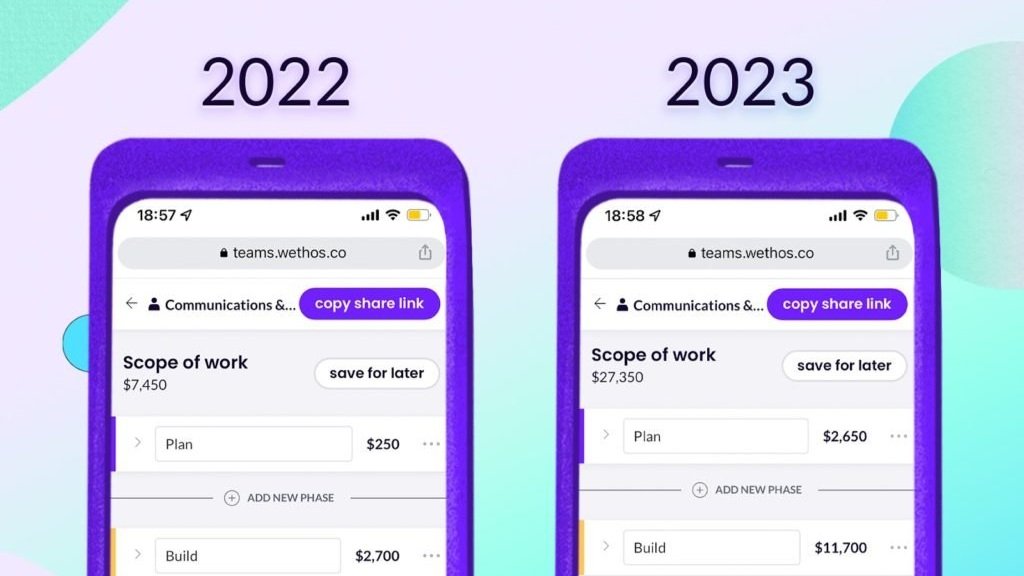What We Learned About Scope Creep in 2022 (And How to Avoid it in 2023)
Let’s cut to the chase: scope creep sucks.
Scope creep creates more stress for your business and can lead to less pay.
But luckily for freelancers, it’s preventable if you have the right systems in place.
Here are a few things we learned about scope creep this year and how you can avoid it in 2023 — so you can earn more for your work.
But first, what is scope creep?
Scope creep is what happens when your client asks for work that isn’t in the initial proposal or scope of work. This could be additional meetings, rounds of revisions, or sudden changes to the project.
The problem with scope creep is that if these additional requests weren’t in the agreed-upon scope of work, then they likely don’t have a price attached to them — which means less pay for you and your team. Simply put, scope creep adds more stress, can delay a project, and minimizes the value you bring.
What we learned about scope creep this year
The biggest reason scope creep happens? There isn’t a clear scope of work in place.
A clear scope of work is essential for every project. But creating a project scope of work for each and every client can be a time-consuming process, especially if you’re starting from scratch every time. Here are a couple of stories we heard about the freelance scoping process this year.
Before Visionary Rising accelerated to a six-figure business, agency founder LaTecia Johnson regularly experienced scope creep with clients. For Johnson, clients would agree to an initial budget, but once the project got started, the scope of work would increase without any adjustment to the price. This was largely due to the lack of a clear scoping process.
For Shana Sanford, founder of Ctrl + S, her scoping process involved creating detailed invoices from scratch and sending them over as a PDF for each potential client. Not only did she spend a significant amount of time doing this, but it was unpaid time that ultimately took away from her pay.
The biggest lesson we learned about scope creep? Without a streamlined scoping process, freelancers can easily fall into the scope creep trap.
How to avoid scope creep in 2023
Use a scope of work template
Preventing scope creep begins with having a clear and detailed scope of work before you start a project. And instead of starting from scratch with every new client or project, use scope of work templates. By following a template, you can quickly and easily make small tweaks to tailor your proposal before sending it off for review.
Your scope of work should outline every detail, from how many versions of a design are included to how many meetings you’re willing to take throughout the duration of the project. It should also include exact pricing for each deliverable so the client better understands the value of everything that goes into the scope.
Create detailed terms
Your contract terms should cover different scenarios related to scope creep. For instance, the price for additional meetings deliverables, expected turnaround times, and what happens if a project is delayed or the client requests changes. Your contract should also include payment terms so there’s no confusion about the payment schedule, deposits, or late fees.
Get a signed proposal
Once a client reviews and agrees to the scope, make sure to send it off for a signature to finalize the project.
A signed proposal gives you and your team protection. And with an agreement in place, you always have something to refer to if you sense any scope creep with a client.

